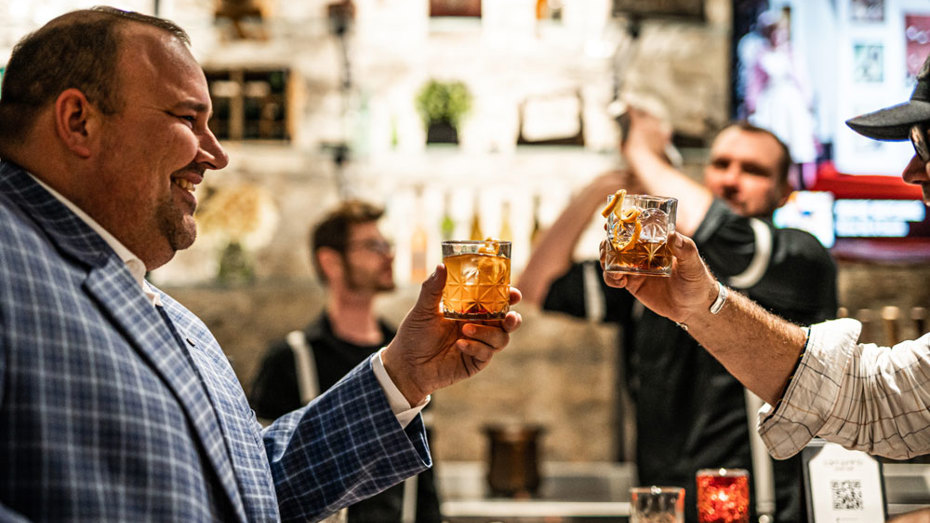Bourbon, America's native spirit, is more than just a drink; it's a cultural icon steeped in history and tradition. For those new to this world, the art of bourbon tasting can be both intriguing and intimidating. But fear not! This beginner's guide will walk you through the basics of bourbon appreciation, turning novices into informed enthusiasts.
Understanding Bourbon: A Brief Background
Bourbon, a type of American whiskey, has strict legal definitions. It must be made in the U.S., contain at least 51% corn, and be aged in new, charred oak barrels. This unique combination gives bourbon its distinctive sweetness and rich, woody character. Unlike its Scotch and Irish cousins, bourbon embodies the bold and pioneering spirit of America.
Step 1: Choosing Your Bourbon
Start with a quality bourbon. Look for phrases like "straight bourbon," which means it's been aged for at least two years and hasn't been blended with other spirits. Age impacts flavor; generally, longer-aged bourbons have deeper, more complex profiles. As a beginner, consider starting with a mid-range bourbon that's neither too young nor too old.
Step 2: The Right Glassware
The right glass can enhance your tasting experience. A Glencairn glass or a tulip-shaped snifter is ideal as they concentrate the aromas towards the top, allowing you to fully appreciate the bouquet of the bourbon. A standard rocks glass works too, but avoid large, open glasses that can dissipate the aroma.
Step 3: Observing the Color
Pour a small amount of bourbon into your glass and observe its color. The hue, ranging from light amber to deep mahogany, can give you clues about its age and the types of barrels used. A darker color usually indicates a longer aging process, which imparts more flavor from the wood.
Step 4: Nosing the Bourbon
Before taking a sip, it's essential to smell (or "nose") the bourbon. Gently swirl the glass to release the aromas, then take a few short sniffs. Bourbon typically has notes of vanilla, caramel, oak, and various fruits and spices. Each bourbon has its unique profile, so take your time to identify what stands out to you.
Step 5: The First Sip
Now, the moment you've been waiting for: tasting the bourbon. Take a small sip and let it roll across your tongue. Bourbon can have a range of flavors, from sweet corn and caramel to spicy rye and smoky oak. Try to detect the different layers of taste as they unfold.
Step 6: The Finish
After swallowing, pay attention to the aftertaste or "finish." A good bourbon leaves a lasting, pleasant flavor in your mouth. The finish can be short or long, and it's often where the subtler, more complex flavors become noticeable.
Step 7: Adding Water or Ice
Some purists insist on drinking bourbon neat, but adding a few drops of water or a small ice cube can open up new flavors, especially in higher-proof bourbons. Water can reduce the alcohol burn, making it easier to detect other flavors. Experiment to see how it changes the experience for you.
Step 8: Comparing and Contrasting
One of the joys of bourbon tasting is comparing different varieties. Try different brands, ages, and mash bills (recipes) to understand the range of flavors bourbon can offer. Tasting notes from experts can be helpful, but remember, the best guide is your palate.
Tips for Enhancing Your Bourbon Tasting Experience
- Educate Yourself: Learn about the history and production of bourbon. Understanding its background can deepen your appreciation.
- Attend Tastings and Tours: Many distilleries offer tours and tasting sessions. These can be invaluable for learning directly from the producers.
- Keep a Tasting Journal: Document your tastings. Note the name, age, and your impressions of each bourbon.
- Pair with Food: Bourbon can be an excellent accompaniment to food. Experiment with different pairings to see how food can complement or contrast the flavors.
Conclusion
Bourbon tasting is an art that combines sensory appreciation with an understanding of history and craftsmanship. As you embark on this journey, remember that the most important aspect is enjoyment. Each bourbon tells a story, and as a taster, you become a part of that narrative. So raise your glass, and here's to discovering the rich and diverse world of America's native spirit!

